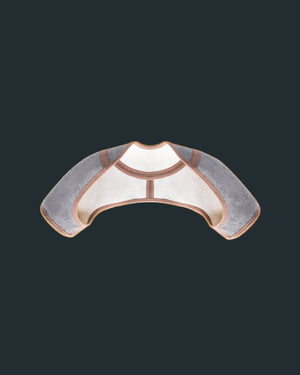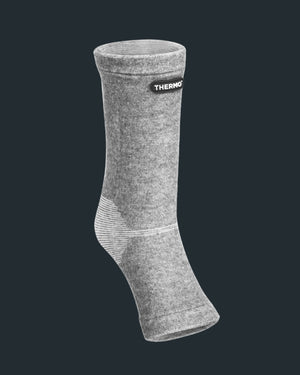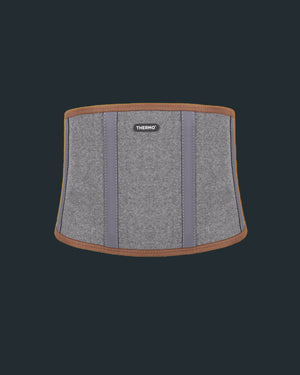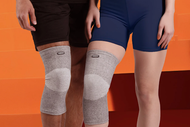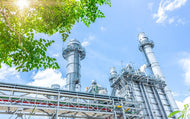Understand the science of muscles healing post-workout and get actionable tips to enhance resilience and actively support its critical healing process.
Muscles are vital components of our overall physical strength and are fundamental to almost every aspect of daily life. Whether you're a professional athlete or someone who enjoys a weekly jog, knowledge about muscles healing can help you stay active and healthy.
This article is a comprehensive overview of how muscles heal and your role in accelerating it. To understand muscle regeneration, we need to start with its causes.
Common Causes of Muscle Injury
Muscle injuries can come from a variety of sources. Here are the most common ones:
- Overuse: Continually using certain muscles without giving them adequate time to recover can lead to muscle injury.
- Poor Warm-up: Not warming up properly before participating in strenuous activities or workouts can cause muscle strains or tears.
- Sudden Movements: Sudden, abrupt movements, especially during physical activities, can strain or tear muscles.
- Accident or Trauma: Injuries from accidents or physical trauma can cause severe muscle injuries.
- Repetitive Strain: Regularly engaging in the same movements can lead to repetitive strain injuries.
- Poor Posture: Maintaining bad posture for prolonged periods can lead to muscle tension and eventual injury.
- Inadequate Training: Not training properly or using incorrect techniques when exercising can injure muscles.
- Lack of Conditioning: Failing to keep muscles conditioned and strong can make them more susceptible to injuries.
- Fatigue: Exercising when extremely fatigued can increase the risk of muscle injuries as tired muscles are less protective.
- Dehydration: Not being properly hydrated can lead to muscle cramps and other muscle-related issues.
The Three Phases of Muscle Healing
Just as a building is constructed from the ground up, our bodies have a systematic and organized way of repairing muscle damage. It has three main phases: the destruction phase, the repair phase, and the remodeling phase. Let's explore these phases in a bit more detail.
Destruction Phase
Also known as the inflammatory phase, the destruction phase is the immediate response to a muscle injury. During this phase, your body's immune system arrives at the injury site, enacting a kind of 'clean-up operation'.
Inflammatory cells, such as macrophages and neutrophils, are sent in to clear away dead cells and other debris. This process is crucial for a healthy healing response.
While it often accompanies swelling and pain, these symptoms show that your body is actively confronting the injury. This phase usually lasts a few days, setting the stage for the second phase of healing to begin.
Repair Phase
Following the clean-up of the destruction phase, your body initiates the repair phase. During this stage, the focus shifts to rebuilding the damaged tissues. Special cells called satellite cells come into play.
These cells differentiate into myoblasts, which then form new muscle fibers. These fibers weave into the remaining healthy tissue, creating a scaffold of sorts for subsequent muscle regeneration.
Simultaneously, the body produces new connective tissue to support and protect the injury site. This phase typically spans a few days to a week, depending on the extent of the injury.
Remodeling Phase
The remodeling phase also referred to as the maturation phase, is the final stage of muscle healing. During this stage, the new tissue strengthens and matures.
As the newly formed muscle fibers continue to grow, they gradually regain their normal function and flexibility. This phase is characterized by a gradual return to normal muscle function and strength.
The duration of this phase varies greatly depending on the severity of the injury and individual healing factors. It can last from several days for minor injuries to up to a year for more severe muscle damage. This phase underscores the importance of patience in the healing process, as rushing can risk re-injury.
Factors Influencing Muscle Healing
An injured muscle tissue heals in time, but some factors impact the recovery speed.
Individual Factors
Every individual's body responds to muscle injury differently. This variance is due to certain individual factors that play a significant role in muscle healing.
- Age: As we age, adult skeletal muscle regeneration diminishes. Older individuals might find it takes longer for their muscles to heal compared to younger people.
- Overall Health: A person's general health status can significantly impact muscle healing. Individuals with chronic conditions such as diabetes or heart disease may experience slower healing processes.
- Genetics: Our genes can play a role in how we heal from injuries. Certain genetic factors can influence the speed and efficiency of muscle repair.
- Physical Fitness Level: Active individuals who exercise regularly often have a faster muscle healing process. Their bodies are more accustomed to repairing microscopic muscle damage from regular workouts.
Environmental Factors
External factors in your environment also significantly influence muscle healing. Below are some key aspects to consider:
- Nutrition: Proper nutrition is crucial for effective muscle healing. Consuming a diet rich in proteins, vitamins, and minerals can expedite the healing process and rebuild muscle tissue.
- Rest: Giving your body adequate rest following an injury is paramount. Rest allows your body to focus its energy on healing and rebuilding tissues. Using some quality sleep gear can help enhance your overall nighttime rest.
- Physical Therapy: Physical therapy exercises can help regain strength and flexibility in the healing muscle. Under the guidance of trained professionals, this can enhance the recovery process.
- Overall Care of the Injury: Following your doctor's advice regarding wound care, medication, and follow-up visits can greatly affect the healing process. This might include wearing quality braces or supports, avoiding certain activities, and attending regular check-ups to monitor the healing progress.
Prevention and Care for Muscle Injuries
Understanding how to prevent muscle injuries is crucial, whether you're an active athlete or simply aiming to stay fit and healthy. Here are some key tips to consider:
Injury Prevention Tips
1. Warm Up Properly
Always take time to warm up before doing any physical activity. A proper warm-up increases body temperature, enhances blood flow to the muscles, and prepares your body for the upcoming activity, reducing the risk of muscle injury.
2. Exercise Regularly
Regular physical activity strengthens muscles and makes them more resilient to injuries. Plot a schedule that you can commit to. Start with moderate amounts of exercise then gradually increase the intensity as your body permits.
3. Use Correct Technique
Whether you're lifting weights or running, using the correct technique is critical to preventing strain and injury. Consider working with a trainer or coach to ensure the appropriate execution of routine and avoid skeletal muscle injuries.
4. Wear Appropriate Gear
Wear the right equipment for your activity. This could be supportive shoes for running, a helmet for cycling, or weightlifting gloves for gym workouts.
5. Stay Hydrated
Proper hydration is important for muscle function. Dehydration can lead to muscle fatigue and cramps, increasing the risk of injury. Our bodies need adequate fluids to transport nutrients to the injury site, supporting the repair and regeneration of muscle tissues.
Staying well-hydrated also helps reduce inflammation, a common response to injury that can prolong the healing process if not properly managed.
6. Eat a Balanced Diet
Consuming a diet rich in proteins, vitamins, and minerals aids in muscle recovery. Avoid excessive intake of unhealthy and processed foods. Here are some food recommendations to try on your next meal:
- Protein-Rich Foods: Protein is a fundamental building block for muscle repair and growth. Foods such as lean meats, poultry, fish, eggs, dairy products, legumes, and tofu are high in protein.
- Omega-3 Fatty Acids: Omega-3 fatty acids have powerful anti-inflammatory properties. Foods rich in omega-3s, such as fatty fish (like salmon and mackerel), flaxseeds, chia seeds, and walnuts, can help reduce inflammation and aid in muscle recovery.
- Vitamin C: Vitamin C is vital for the production of collagen, a protein that helps repair and grow tissues. Foods high in vitamin C include citrus fruits, strawberries, bell peppers, and broccoli.
- Vitamin D and Calcium: These nutrients work together to strengthen bones and support muscle health. You can get vitamin D from fortified dairy products, fatty fish, and sunshine. Calcium-rich foods include dairy products, leafy greens, and fortified foods.
- Antioxidant-Rich Foods: Antioxidants help minimize damage to cells and speed up the healing process. Berries, nuts, dark chocolate, spinach, and beets are all rich in antioxidants.
- Potassium and Magnesium: These minerals are important for muscle function and can help prevent muscle cramps. They can be found in foods like bananas, avocados, spinach, and almonds.
- Whole Grains and Complex Carbohydrates: These provide sustained energy for the body, supporting the overall healing process. Foods like brown rice, oats, and whole-grain bread or pasta are good choices.
7. Ensure Regular Rest
Muscles need time to rest and recover, especially after intense workouts. Overworking muscles without adequate rest can lead to injuries. Make sure to include rest days in your workout schedule.
8. Incorporate Flexibility Exercises
Include flexibility exercises such as stretching and yoga into your routine. These can enhance your range of motion and prevent muscle strain. They also promote better circulation, helping to speed up recovery post-workout or post-injury, ensuring optimum healing of any scar tissue and muscle strains.
9. Listen to Your Body
Don't ignore pain or discomfort during workouts. If you feel something is wrong, it's important to stop and rest.
10. Regular Health Check-ups
Regular health check-ups can help detect potential problems early before they escalate into more serious injuries. This is especially important if you're involved in heavy physical activity or sports. Invest in annual physical exams and get a list of the best wellness centers in your area.
Importance of Physical Therapy in Muscle Healing
Physical therapy plays a vital role in muscle healing. It not only helps in the recovery phase but also strengthens muscles and prevents future injuries. It also gives you the following benefits:
- Pain Reduction: Physical therapists use techniques like massage, heat therapy, and electrical stimulation, which can help reduce pain and muscle stiffness.
- Improved Flexibility and Strength: Therapy exercises can help restore range of motion and build strength in the muscles, helping them regain their normal function.
- Prevention of Permanent Damage: Physical therapy can help ensure that the healing process is effective and complete, preventing chronic conditions or permanent damage from developing.
- Prevention of Re-Injury: By strengthening the muscles and improving flexibility, physical therapy can help prevent future injuries.
- Individualized Healing Plan: Physical therapists create a personalized treatment plan based on the specific needs and goals of each patient, promoting efficient and effective healing.
- Improved Mobility: Therapists guide patients through exercises designed to improve mobility, making daily tasks and activities easier.
- Educational: Physical therapists also educate patients about their injuries and healing process, providing insights into how best to aid recovery.
- Non-Invasive Treatment: Physical therapy is a non-invasive treatment option, making it a safer alternative to surgery for many patients.
- Improved Overall Fitness: Besides aiding in healing, physical therapy can also help improve general fitness and well-being, contributing to better health overall.
Looking Forward: Advances in Muscle Repair Research
Science continues to uncover new information about muscle healing. New treatments and therapeutic approaches are being explored to enhance the muscle healing process.
One of the promising approaches under investigation is regenerative medicine, a field that leverages the body's ability to heal itself. This includes techniques such as muscle stem cell therapy, which involves using a patient's own stem cells to promote the healing of damaged muscles.
Researchers are also exploring the potential of growth factors—proteins that stimulate cell growth—to enhance the muscle healing process. For instance, studies have shown that Insulin-like Growth Factor-1 (IGF-1) can accelerate muscle repair and mitigate muscle loss after an injury.
The use of biomaterials, such as hydrogels and scaffolds, is another method pursued as a way to provide a conducive environment for muscle regeneration. These biomaterials can assist in delivering stem cells or growth factors to the site of injury, encouraging effective muscle repair.
Lastly, there’s the potential of gene therapy to promote muscle growth and repair. While still in the early stages, this approach could open up new possibilities for treating severe muscle injuries and muscle-wasting diseases in the future.
While these advances are promising, they're currently in various stages of research and are yet to make their way into standard clinical practice. Nonetheless, they demonstrate the exciting prospects for the future of muscle healing.
Conclusion
Understanding the process of muscle healing is more than just a biological curiosity. It's an essential part of maintaining robust health and optimum physical performance.
Recognizing how our bodies work to repair muscle damage can empower us to take proactive measures that support effective healing. Use this article as a guide on your road to recovery.

